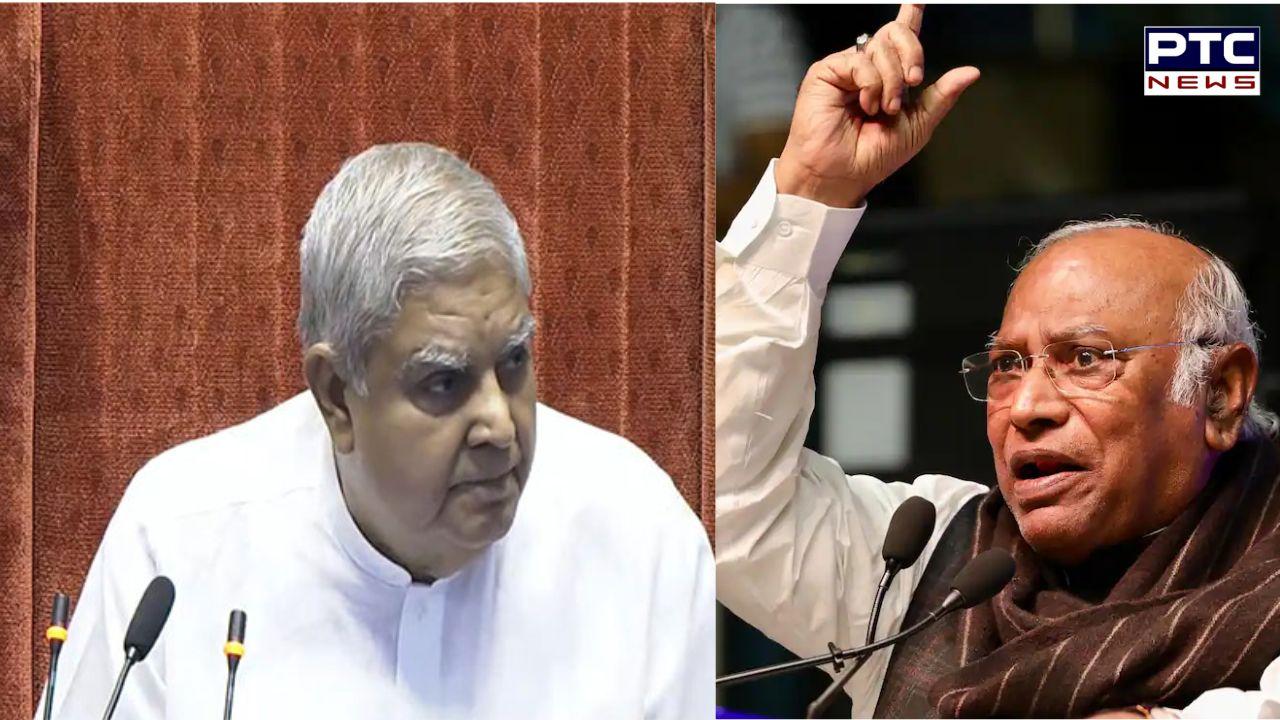

A first in India's political history: Motion to remove Vice President tabled in Parliament; what next? | Explained
PTC Web Desk: On December 10, opposition parties submitted a notice for a no-confidence motion against Vice President Jagdeep Dhankhar, who also serves as the Chairman of the Rajya Sabha. This move, unprecedented in India’s parliamentary history, has stirred political tensions and highlighted deepening rifts between the ruling National Democratic Alliance (NDA) and the opposition bloc, INDIA. The motion has brought into focus allegations of partiality, procedural disagreements, and the fragile dynamics of coalition politics.
The motion comes after months of escalating disputes in the Upper House, where opposition parties have accused Vice President Jagdeep Dhankhar of favouring the ruling NDA coalition in his conduct as the Chairman. Reports suggest that 60 Rajya Sabha members signed the motion, the minimum required to initiate such a process. Congress leader Jairam Ramesh, in a social media post, called the decision “painful but necessary,” alleging that the Vice President had stifled the opposition’s voice during critical debates.
The tensions reached a boiling point during the winter session of Parliament. The opposition claimed Dhankhar allowed an NDA member to make unsubstantiated allegations against Sonia Gandhi, former Congress President, without providing the opposition an opportunity to respond. This followed a series of contentious exchanges in earlier sessions, including debates over the handling of the Manipur violence, the Women’s Reservation Bill, and the government’s economic policies.

Background of the conflict
The discord can be traced back to the monsoon session in August 2024. During a debate on the plight of Indian wrestlers, Congress President Mallikarjun Kharge raised allegations against the government’s handling of wrestler Vinesh Phogat’s case. Dhankhar, citing parliamentary traditions, cautioned Kharge against politicising the issue. The Vice President’s remarks were met with protests from opposition leaders, particularly from the Trinamool Congress (TMC) and the Dravida Munnetra Kazhagam (DMK).
Subsequently, TMC MP Derek O'Brien accused Jagdeep Dhankhar of violating the Chair’s neutrality, leading to a heated argument. Dhankhar’s decision to reprimand O'Brien during the session became a flashpoint, with opposition members walking out in protest. Similar disruptions occurred during the December session when discussions about foreign influences on Indian politics were allowed at the behest of NDA MPs, drawing sharp criticism from the opposition.
Constitutional and procedural aspects
The process for removing the Vice President is outlined in Article 67(b) of the Indian Constitution. A no-confidence motion can be initiated if at least 50 members of the Rajya Sabha provide written notice. Once accepted, the motion requires a 14-day notice period before it is debated and voted upon.
The motion must be passed by a majority of the total membership in the Rajya Sabha and then approved by a simple majority in the Lok Sabha. Notably, the Vice President is not allowed to preside over the proceedings when the motion is under consideration. In this case, Deputy Chairman Harivansh Narayan Singh will likely take over the proceedings.
Political experts believe the motion is unlikely to pass due to the numerical strength of the NDA in both Houses. The Rajya Sabha currently has 231 members, and the INDIA alliance’s strength, even with support from smaller parties, falls short of the required majority of 116 votes. The BJP and its allies command a significant majority, making the motion’s success highly improbable.

Opposition’s strategy
Despite the lack of numerical strength, the opposition’s move carries symbolic weight. By filing the motion, the INDIA alliance aims to draw attention to what it perceives as the erosion of democratic norms under the NDA government. Opposition leaders argue that Dhankhar’s actions as Chairman have undermined parliamentary debate, setting a dangerous precedent.
Congress MP Randeep Surjewala stated, “This motion is not just about numbers; it is about principles. The Rajya Sabha must remain a forum for free and fair debate. When the Chair becomes partisan, democracy suffers.”
The motion is also seen as a test of unity for the INDIA alliance, a coalition of over 20 parties. However, internal tensions within the alliance could complicate matters. TMC supremo Mamata Banerjee and RJD leader Lalu Prasad Yadav have expressed reservations about certain aspects of the coalition’s functioning, including leadership roles and seat-sharing arrangements.
Reactions from the NDA
The NDA has dismissed the motion as a “political gimmick.” BJP spokesperson Sambit Patr said, “The Vice President has conducted himself with utmost dignity. This motion is an insult to the institution of Parliament.”
Union Minister Pralhad Joshi argued that the opposition’s claims lack substance. “The people of India will see through this charade. The BJP stands firmly with the Vice President,” Joshi said.
Implications for INDIA Alliance
The motion is a double-edged sword for the INDIA alliance. On one hand, it demonstrates their collective resolve to challenge the NDA’s dominance. On the other hand, it exposes vulnerabilities within the coalition. Political analysts note that if the motion fails, it could embolden the NDA while creating fissures within the opposition ranks.
- With inputs from agencies
